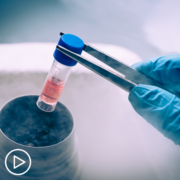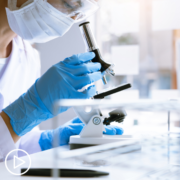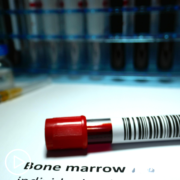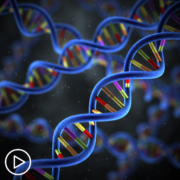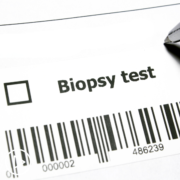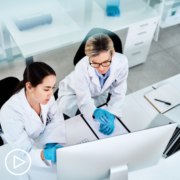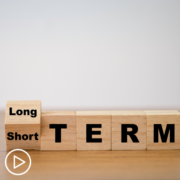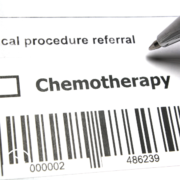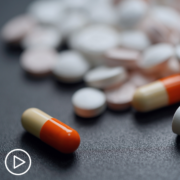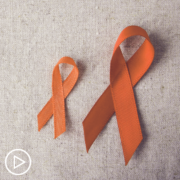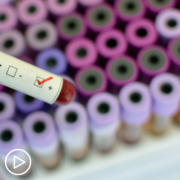How Can Bone Marrow Biopsies Be Used in AML Care? from Patient Empowerment Network on Vimeo.
How do AML care providers use bone marrow biopsies in patient care? Expert Dr. Sara Taveras Alam from UTHealth Houston explains how the tests are used and shares patient advice for lifestyle and dietary precautions against infections.
[ACT]IVATION Tip
“…in terms of going out in the world, I would avoid for our AML patients to be in crowded spaces, and if they are going to be in crowded spaces to use a mask so that they’re protected from respiratory infection.”
See More from [ACT]IVATED AML
Related Resources:
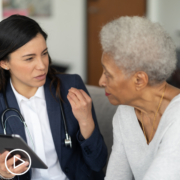
Black and Latinx AML Patients | The Impact of Cultural Beliefs |

How Do AML Patients and Outcomes Differ by Population Groups? |

AML Diagnosis Disparities | Factors Impacting Underrepresented Racial and Ethnic Groups
|
Transcript:
Lisa Hatfield:
Dr. Taveras, can a bone marrow biopsy be used to monitor response to treatment in AML, and are there other tests to help monitor treatment and kind of a unique question, are there any specific dietary or lifestyle recommendations for patients undergoing a bone marrow biopsy or diagnosed with AML?
Dr. Sara Taveras Alam:
Well, the response to treatment in AML is measured with a bone marrow biopsy as the best test to assess response; however, we can have a clue into the response based on the blood test for the patient, so typically patients with acute myeloid leukemia will have anemia and thrombocytopenia, so low hemoglobin, low platelets and will likely be needing transfusions for this.
Sometimes patients with acute myeloid leukemia will have an elevated white blood cell count or low white blood cell count. Ideally, if a patient has responded to treatment, we would see the hemoglobin and platelets improving and less transfusion requirements. They might not normalize that, they would usually improve if there is response to treatment, and similarly, when it comes to the white blood cells, if the patient has responded to treatment, ideally the white blood cell count should normalize and you should not be seeing any abnormal immature blood cells in the blood work, so we should not be seeing any blasts and ideally we would be having…I’m sorry, a good number of healthy white blood cells.
So that is a surrogate marker for the bone marrow biopsy to assess response, how is the patient doing? What symptoms are they having? What is their CBC or blood count looking like? Ultimately, the bone marrow biopsy is the best test, because then we look at the place where the blood cells are being born and confirm that the blast count has been eradicated, that we see no blasts or at least less than 5 percent, which would be what we call a morphologic remission, then we do deeper assessments by sending the tests about the karyotype or chromosomes that are driving the disease and the mutations that could be driving the disease.
Ideally, if the patient has a very good response, all of those should be gone, sometimes the mutations are still there, but we’re not seeing the deceased being active, and really the bone marrow biopsy will guide the treatment to see if we’re in the right trajectory, if we can continue whatever treatment the patient is on or if we need to switch gears and treat with a different regimen to get the disease back in control.
As it relates to specific dietary or lifestyle recommendations for patients undergoing bone marrow biopsies, I wouldn’t say that there are any specific recommendations for that. On occasion, if a patient is on a blood thinner, they may be asked to stop the blood thinner for the bone marrow biopsy. Of course, that depends on what the indication for the blood thinner is. But in terms of dietary lifestyle changes, I don’t think that any change is necessary.
In terms of patients overall going through acute myeloid leukemia in terms of lifestyle recommendations, it is recommended that the patient be extra careful with infections because they are at higher risk for infection and this may mean different things at different stages of treatment and may be guided by what blood counts are looking like, specifically the neutrophils, which are the healthy white blood cells that help protect us from infections.
So patients that are neutropenic, meaning have low neutrophil count are at really high risk of infections, and we recommend for them to avoid undercooked meat or raw seafood, for example, ceviche or sushi. Any meat should be well cooked and any vegetables have to be very clean, very washed, so that we eliminate the risk of infection.
Oftentimes, I tell my patients to stick to cooked vegetables rather than raw because, unfortunately, if there is some bacteria, then the risk for our patients is much higher than the general population. Additionally, in terms of going out in the world, I would avoid for our AML patients to be in crowded spaces, and if they are going to be in crowded spaces to use a mask so that they’re protected from respiratory infection.
Share Your Feedback About [ACT]IVATED AML

